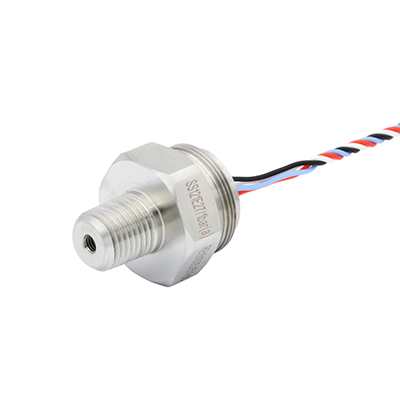A pressure transducer is fundamentally any device that converts an applied pressure into an electrical signal. There have been many different types of pressure transducer developed over the years such as bonded foil, thick film, thin film & piezoresistive silicon to name just a few. All of these sensing technologies are pressure transducers and they provide an electrical signal typically a mV output signal, which varies with changes in pressure when connected to an appropriate power supply.
Typically a pressure transducers output signal is one generated by the primary sensing element. Since it is difficult to achieve tight electrical tolerances with the sensing elements during manufacture it is often necessary to add a circuit to trim the zero & span offsets and compensate for errors over the operating temperature range. However the pressure transducer still retains the natural characteristics of the particular sensing technology employed such as linearity, hysteresis, repeatability, stability and frequency response. In fact these are the main reasons for using a pressure transducer which apart from the compensation circuitry are the purest form of pressure sensor.
You can source pressure transducers without compensation electronics which are also known as pressure capsules, modules or headers, which are mostly used by instrument manufacturers who utilize their own micro-electronics to compensate the pressure transducer.

